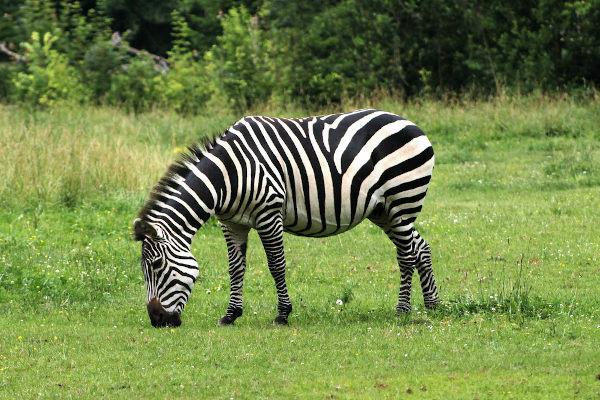Herbivores they are animals that feed on vegetable and seaweed. That ecological relationship established between animal and plant is called herbivory. Herbivorous animals have a series of adaptations that guarantee this type of food, such as mouthparts adapted to the insects, teeth that guarantee the grinding in the mammals, and mutualistic bacteria that guarantee the digestion of cellulose.
Read more: Teeth - essential structural in the digestion process
Herbivorous animals and their food adaptations
herbivorous animals they feed on plants and algae. This group includes so much invertebrate animals, like caterpillars, like animals vertebrates, like the horses. Such organisms stand out for presenting adaptations that allow the efficiency of your eating habits.
In insects we observe a series of different mouthparts that relate to the type of food they eat. In the butterflies, for example, the mouthparts are adapted to suck the nectar from the flowers, while crickets, locusts and insect larvae, such as butterfly, have chewing mouthparts.
In the birds, you beaks are also varied,depending on the type of habit the bird has. Hummingbirds, for example, have a long beak that helps remove the nectar from the flowers, while in the macaws the beaks are adapted so that they can feed on certain fruits.
With regard to mammalian herbivores, we have verified the dentition basically formed by premolars and molars, that help the animal to grind the food. The incisors and canines are usually modified to ensure that the animal is able to bite into the plant.
Herbivores also establish relations mutualisticin order to get bigger efficiency in the process of herbivory. In the presence of bacteria in the digestive tract it is important for cellulose breakdown in many vertebrates. In termites, a mutualistic relationship with protists acting in the process of digestion of the cellulose present in the wood. These relationships are essential as animals are unable to produce enzymes that break down the cellulose, and it is this that guarantees a great amount of energy for them.

We must also not forget to mention the animals ruminants, like the cow and the sheep, which have a highly adapted digestive system for herbivorous food.
In these animals, a stomach with four cameras is observed and food passes through the mouth more than once. After the food is chewed, it moves to the rumen and reticulum, where mutualistic microorganisms work to break down the cellulose. The food returns to the mouth, where chewing will be performed again. The food is then swallowed and proceeds to the omasum and abomasum. In the omasum, a large part of the water is absorbed, while in the abomasum the action of digestive enzymes is observed. From there the food goes to the intestine.
It is worth noting that when compared to carnivores, herbivores have a longer digestive tract. This is important because, in these animals, the digestion process is more complex and requires more time for the plant matter to be digested.
What is the position of herbivores in the food chain?
Herbivores are animals that feed on algae and plants, that is, on the producing organisms in the food chain, with that, we have that they occupy the position of primary consumers. It is noteworthy that carnivorous animals never occupy this position in the chain, but animals omnivores, when feeding on vegetables, they can also occupy the position of primary consumers.
Read too: Food chain and web - show the flow of matter and energy in ecosystems
Examples of herbivorous animals

Here are some examples of herbivorous animals:
Bee
Blue Arara
Butterfly
Horse
Koala
Bunny
Termite
Elephant
Locust
Giraffe
Hipoppotamus
Sheep
Toucan
cow
Zebra
By Vanessa Sardinha dos Santos
Biology teacher

